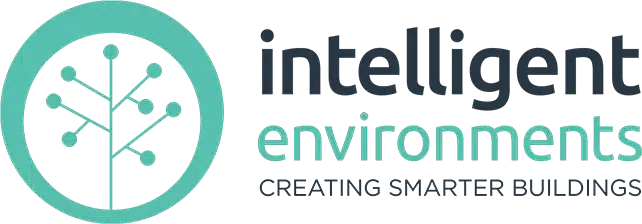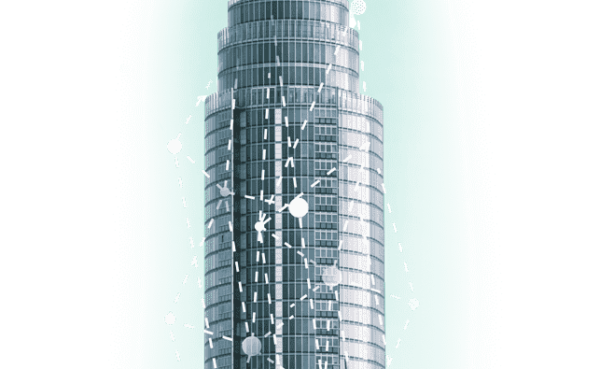When DALI automation first emerged into the lighting controls market, like all new technologies it had its teething problems.
DALI (Digital Addressable Lighting Interface) was originally developed to allow digital control, configuration, and querying of fluorescent ballasts.
It was designed to replace the simple one-way, broadcast-like operation of 0/1-10V analogue control.
DALI Then
The philosophy behind DALI was noble indeed. It was a genuinely open protocol that any manufacturer could use, and properly DALI-tested and compatible products would be able to work together within a DALI automation system.
The intention was for end users to no longer be handcuffed to a particular manufacturer and their proprietary products for the life of their control system. They would be free to select from any, or indeed multiple suppliers.
The original version of the DALI protocol only included control gear. Control devices such as application controllers, power supplies and input devices (e.g. sensors) were not included in DALI version-1.
Issues
Although from the beginning it was necessary for any product purporting to be DALI to be certified as such, initially it relied on manufacturers registering with the DALI Alliance as a supplier of DALI and testing the DALI device in-house. They could then use the DALI trademark on their product. Products carrying the DALI logo could then be assumed to be DALI compliant and would be able to communicate with each other to create a DALI automation system.
Issues very quickly came to light:
- Testing was not always conducted in the correct rigorous manner when carried out ‘in-house’ with no independent auditor.
- As a result of the above, seamless communication was not possible, with “rogue” DALI devices creating all sorts of issues.
- In some cases the DALI logo was used illegally, and put onto devices that were in no way DALI tested or DALI compliant.
Early Adopters
Intelligent Environments had been supplying and commissioning lighting control systems for a number of years, but these had been proprietary systems. We became early adopters of DALI and we had (as we do now) a sincere belief in the positive benefits for the end user in having a system with a totally open protocol.
We were able to control DALI lights via gateways from proprietary systems such as C-Bus but were still unable to design and commission a system that spoke “native DALI” i.e. didn’t require a gateway as a translator, and where all system devices would therefore be DALI compatible and interchangeable with other such DALI products.
Frustrations Around DALI
DALI lighting became popular quickly due to its excellent dimming properties, and the ability to address lights individually and allocate them to groups etc with no reference to how they’d been cabled. With no separate (and segregated) ‘bus’ cable required, the installation of DALI ballasts was quicker and simpler for the electrical contractor. Hence DALI started to be specified in many commercial projects, but a ‘full DALI automation system’ (with no proprietary products required) was still not available.
A major frustration for all stakeholders when maintaining DALI lighting was the need to call a specialist DALI technician to the site to re-address a DALI device every time a fitting or driver needed to be replaced. As the specialists called upon to do this, we found it frustrating too. It was not a productive use of our engineers’ time, and understandably the customer resented the need to pay labour for both the electrician’s and the DALI specialist’s time.
DALI-2 Now
The emergence of DALI-2 was the real game changer. With DALI-2 there were several significant developments that provided a totally different playing field.
-
-
-
- To be certified DALI-2 every device had to be independently tested (testing could no longer be conducted “in-house”).
- All DALI-2 certified products are listed in a searchable directory maintained by the DALI Alliance. If there is any doubt about a supposed DALI-2 device, it can easily be confirmed whether the product is genuinely certified, and allowed to carry the DALI-2 logo.
- DALI-2 allowed for the connection of input devices such as switches, sensors etc to reside on the DALI line. This now allowed for a system to be a total “DALI-2 solution” rather than relying on a proprietary control system. The ‘handcuffs’ tying a customer to a single manufacturer were now totally removed.
- DALI dimming allows for accurate and standardised light output control. Certified DALI-2 control gear follows a standardized dimming curve designed to match human-eye sensitivity and brightness perception. The DALI-2 testing procedure requires measurement of light output. If you ask for 50% light output, you get 50%! It is both consistent from fixture to fixture and consistent between manufacturers.
- DALI-2 certification programme now includes tuneable white control. Colour control and tuneable white enabled from DALI-2 control gear. Scenes allow recall and smooth fading of colour as well as brightness.
- A DALI-2 system should be designed for well-being and comfort, incorporating efficient and human-centric lighting. Daylight harvesting via light level sensors can adjust intensity according to ambient light levels as the day progresses. Additionally light levels can be matched to actual utilisation of spaces through occupancy sensing. Colour temperature/Tuneable white can be customised to reflect time of day/individual preferences. User interfaces allow for personal control of lighting via push-buttons, rotary controls, touch panels, or even smartphone apps. Improving comfort and wellbeing for occupants results in higher productivity and better staff retention.
- The two-way communication provided between all DALI-2 devices on the DALI line provides comprehensive feedback from those devices. With the right interface, it is now possible to report back to building owners, facility managers and maintenance personnel on a variety of elements around the past and current status and even around how their buildings are used. Analytics software can enhance the system to provide easy-to-read visuals to fully understand the information the DALI-2 system can provide.
- Monitoring and reporting can be automated. Faults can be easily located and maintenance staff notified for swift remediation. Predictive maintenance can be utilised.
- DALI-2 emergency lighting can reside on the same DALI line as standard lights, yet can be monitored, tested, and reported upon separately, making compliance so much simpler. All functions can be automated, or activated by user as required.
- Replacing a DALI-2 driver or other DALI-2 device is now simple with the system we employ allowing the client’s maintenance personnel to auto ‘repair’ (address) the replacement via an app, or we can assist remotely via the cloud. No site visits necessary.
- If the system resides on the Cloud and utilises Plan View (no cost involved) a record of all replacements (adds/moves/changes) is maintained.
- The DALI-2 control system does not HAVE to reside on the Cloud. It operates totally independently. However remote management etc does necessitate the cloud-based connection.
- Costs for maintenance and compliance can be reduced dramatically.
- DALI-2 products can be used in older DALI systems as devices are backwards compatible.
- In November 2020 DALI-2 was adopted in its entirety as the lighting control standard for Australia and New Zealand. At time of writing it remains the only lighting control standard. To be compliant, any new lighting controls installation must be DALI-2.
- DALI+ allows for wireless DALI devices to be used to create an independent wireless network, or to be connected to a wired DALI-2 network for a hybrid DALI-2 control system.
-
-


